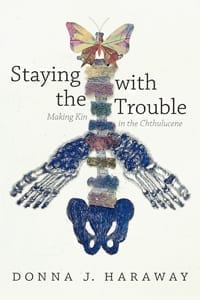From the Training Desk: Our New Training Site and Notes on “Tech Culture”
At first glance, my position at Mitratech as a Training Specialist can appear rather grim. I train people how to use our software, but I also produce online training courses and content so that customers can learn at their own pace.
When I first started working here, I understood the fragility of my position: If I were successful, customers would log in to a Learning Center and click through relevant courses, and a training specialist would no longer be needed. My job responsibilities seemed to include the calculated and ruthless annihilation of my own job. Much to my relief, this is not how things have worked out. We have a new Learning Center, we have online courses (more coming soon!), and I’ve never been busier.
When the Juicero crisis was just dying down, we were revamping our website to say, “Welcome to TAP: Automate Anything.” While Silicon Valley and SF tech were getting another round of condemnation for automating unnecessary processes, we were joking about how TAP would soon automate processes such that no one would need to bring a piece of toast to one’s own mouth – there ought to be a workflow that does that for you.
Juicero is a Silicon Valley juice company that built a beautiful, Apple-inspired juicer, which, according to their experts, perfectly juiced their pre-packaged “Packs” of vegetables and fruits. Reporters quickly discovered, and swiftly made manifest to all, that two hands, pressing the Packs together, could more efficiently withdraw the “raw, plant-based nutrition” (juice), than could the 400 dollar Juicero.

In Donna Haraway’s most recent book, Staying with the Trouble, she writes about the future of the planet and the ways in which we imagine that technology will either come to our aid or condemn us. She writes in response to the two sides of Juicero – as savior bringing us the only pure juice since technology polluted our simple lives, and as human folly, the same human folly that produced the pollution from which Juicero once tried to save us.
She disavows this way of thinking: ‘namely, a comic faith in technofixes… [that] technology will somehow come to the rescue of its naughty but very clever children.” Haraway has no truck with origin stories, of returning to purity, of eschewing the world in which we live.

Instead, Haraway refers to the technofix/techno-apocalypse mentality as a “touching silliness” that we would do best to shrug off. She never condemns technology – with no original purity to return to, she has no reason to look upon automation with anything other than curious optimism. She laughs with us at the prospect of a workflow automating breakfast, and wisely notes that “sometimes it is hard to remember that it remains important to embrace situated technical projects and their people. They are not the enemy; they can do many important things for staying with the trouble” (3).
This is what Mitratech does, and this is what our training program aspires to do as well. In an excellent interview, Justin Hectus describes workflow automation as a fundamentally human endeavor. Workflow automation doesn’t automate the human out of the interaction, it automates the bulky mess that any human would prefer to digitize. Justin mentioned that workflow automation has not been thrust upon us by technological deities looking to save us from our human ways, but rather that these ideas come from the humans doing the work who wish to do it even better.

Workflow automation is about connection – bringing different stakeholders, processes, and technologies into conversation with one another. It can be revolutionary and it certainly relies on smart, easy to use technology, but more than that it relies on the curious optimism of those who use it.
TAP works under the assumption that people want their lives to be easier, that they want more time to focus on what matters, and that workflow automation, rather than changing the fundamental ways in which humans collaborate, reveals instead that there is no fundamental way. There are just people who can use different technologies to connect with each other and their world in interesting and increasingly simple ways.
Which brings me back to the new training site. After working here and witnessing first hand both our conversations about workflow automation as well as the global conversation regarding the role of technology, I can say that I am no longer worried about my own annihilation. The new training site, just like our product, will digitize certain processes and make our customers’ lives easier.
Eager TAP learners will no longer be bound to the schedules of our training specialists or the pace of our programs – they will be able to work at their own pace, identifying themselves what content is most important. This type of automation makes everyone’s lives easier, and rather than automating me out of a job, it turns out that my job is changing slowly and for the better.
I love working with new customers and introducing them to TAP, but I also am grateful that I will soon be able to ask – would you prefer to do this online? Not everyone learns the same way, and our training program will get better and better at making TAP easy for everyone.



